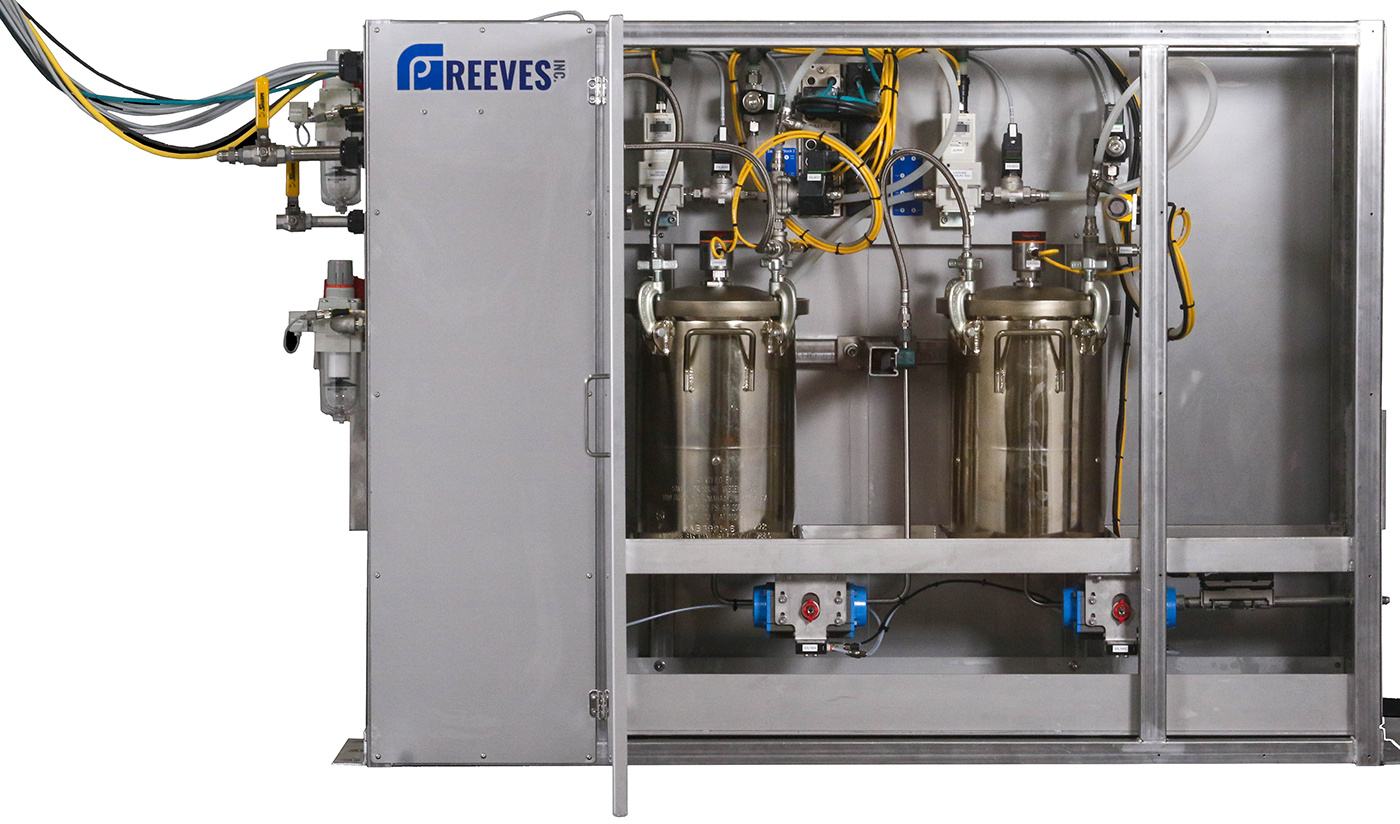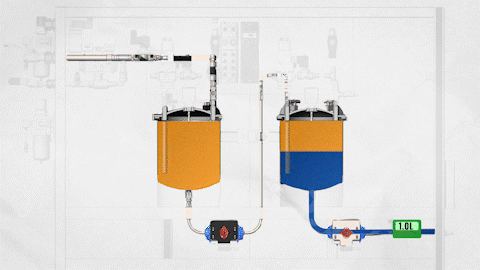Case Summary:
Renewable energy is paving the way for a sustainable future. Though there are obvious benefits of transitioning towards renewable options, one of the most talked about problems regarding renewable energy is the inconsistency. However, this is solved through energy storage systems, which hold power for instances where it is not as readily available.
Recently, we were approached to assist in developing an automated filling solution that not only measures and dispenses their electrolyte solution but degases the material as well. We were enthused to design a fluid dispensing solution to fit their needs.
The Problem: Handling the Material
Material compatibility is an important part of this project, since the material used is extremely basic. If the material encounters moisture in the air, an exothermic reaction occurs, causing it to become extremely hot. Safety was a major concern for the manufacturer – the material could burn skin if it were to come in contact.

Degassing: No Air, No Problem
Our system utilizes dual pressure pots. These products are ideal for lower viscosity material and are available in stainless steel, a compatible material. The first tank is where the degassing process takes place, and the second tank holds the prepared material prior to dispense. The general concept of degassing is to hold material under vacuum pressure, removing all dissolved gas from the material. For this application, the material is held under vacuum for one minute.
Nitrogen gas then pressurizes the degas tank. Due to the reactive properties of this chemical, we could not use compressed air as this would trigger the exothermic reaction. The nitrogen gas can keep the pressure and also ensures the dispense system is completely airless.

Dispensing: Customized Precision
During the degassing process in the first tank, the second tank dispenses material to the rest of the system, utilizing an ultrasonic flow sensor to monitor volume. When the appropriate amount of material passes through the flow sensor, a valve at the end of arm tooling is shut to prevent excess material from being dispensed. Our battery filling system is paired with tooling designed by an integrator to fill the energy storage compartments. When the dispense is complete and the material level in the second tank is low, it alerts the system that it is ready for more material.
At this point, the valve between the dispense tank and the flow sensor close, and a valve between the two tanks open. Additional nitrogen is then pumped into the degassing tank to move the chemical into the dispense tank. The connecting valve is then shut, and the degassing process begins in the first tank, restarting the cycle.
End Result: Renewable Energy Solutions
Our system helped the end user simplify their process and rest easy that their material was being handled properly and dispensed accurately. As the demand for renewable energy grows, the need for more innovative solutions will as well. GP Reeves will be there working to bring custom dispensing solutions to your production. Contact one of our team members today to start your process!
Interested in a customized solution?
Fill out the form below and we’ll follow up with you!
